
体育运动科学(英文)(Journal of Science in Sport and Exercise) 维普目次
- CSCD
- AMI入库
- 主管单位:
国家体育总局
- 主办单位:
北京体育大学
- 国际刊号:
2096-6709;EISSN 2662-1371
- 国内刊号:
10-1599/G8
- 学科分类:
- 字数:
12000-30000
- 有无基金:
/有基金 100.0%
- 周期:
CN外文-季刊
- 特殊属性:
外文期刊
- 电话:
010-62989557(公众号信息)
- 邮箱:
ssej_bsu@foxmail.com(公众号信息)
- 复合因子:
0
- 综合因子:
0
- 收录:
维普目次
- 级别:
CSCD,AMI入库
期刊简介
《体育运动科学》期刊已被查看: 次
更新频次
单位占比
一作占比
/有基金-100.0%投稿指南
1、投稿方式:在线投稿。
2、官网网址:https://link.springer.com/journal/42978
3、投稿系统:https://www.editorialmanager.com/ssej
4、邮箱:ssej_bsu@foxmail.com(公众号信息)
5、电话:010-62989557(公众号信息)
6、出刊日期:季刊,逢季中月出版。
2024年4月22日星期一
《体育运动科学(英文)》简介
【微信公众号信息】
《体育运动科学(英文)》(Journal of Science in Sport and Exercise,SSEJ,季刊) 创刊于2019年,是由国家体育总局主管,北京体育大学主办的高水平英文版体育学术性期刊,是一份国际双盲同行评议期刊,致力于报道国内外体育运动科学领域的最新研究成果、最新研究进展及发展趋势。SSEJ在2021年10月被Scopus数据库收录,在2023年11月被ESCI数据库收录!
SSEJ主要刊载运动科学研究领域新成果、新理论、新技术,包括从分子、细胞、组织、系统到全身水平的原创性基础研究、应用研究、综述和专家共识类论文,涉及运动促进健康、竞技体育、中国传统健身方式等方方面面的研究,引领运动科学发展,促进国内外学术交流,推动研究成果转化,提高运动科学研究水平。为运动科学领域学者、科学健身指导人员、物理治疗师,运动队医生和科研人员等提供重要的国内外学术信息交流平台。
期刊主页:
https://www.springer.com/journal/42978
全文链接:
https://link.springer.com/journal/42978/volumes-and-issues
投稿网址:
https://www.editorialmanager.com/ssej/default1.aspx
编辑部邮箱:
ssej_bsu@foxmail.com
编辑部电话:
010-62989557
《体育运动科学(英文)》投稿指南
(Journal of Science in Sport and Exercise)
【官网信息】
Journal of Science in Sport and Exercise
Submission guidelines
Instructions for Authors
Manuscript Submission
Submission of a manuscript implies: that the work described has not been published before; that it is not under consideration for publication anywhere else; that its publication has been approved by all co-authors, if any, as well as by the responsible authorities – tacitly or explicitly – at the institute where the work has been carried out. The publisher will not be held legally responsible should there be any claims for compensation.
Permissions
Authors wishing to include figures, tables, or text passages that have already been published elsewhere are required to obtain permission from the copyright owner(s) for both the print and online format and to include evidence that such permission has been granted when submitting their papers. Any material received without such evidence will be assumed to originate from the authors.
How to Submit
Manuscripts should preferably be submitted in the original file format. Please follow the hyperlink “Submit manuscript” on the right to open an e-mail to the editor and attach the files.
Please ensure you provide all relevant editable source files. Failing to submit these source files might cause unnecessary delays in the review and production process.
Submission Types
In addition to original investigations, the journal publishes reviews, commentary, letters to the editor and debate on topics of current interest.
Original Article
Studies that are of high scientific quality and that are of interest to the diverse readership of the journal. Manuscripts should include an abstract and appropriate experimental details to support the conclusions. Original Articles should be no more than 4000 words and should not include more than 6 display items (tables and/or figures) or more than 60 references.
Reviews
Review articles have a word limit of 6000 words excluding abstract, references, tables and figures. Review articles are limited to 75 references. Authors of review articles shall be established, recognized experts in the field.
Systematic and Meta-Analytic Reviews
Systematic and Meta-analytic reviews attempt to provide a penetrating overview of primary research on a particular research question by identifying, choosing, synthesizing and evaluating all high-quality research evidence relevant to the question or topic of the review in order to answer it. Key points:
1. Systematic reviews seek to find, categorize, and report all evidence that fits previously established eligibility criteria in order to address a specific research question.
2. The goal of systematic reviews is to reduce bias by using clearly defined, systematic methods to evaluate the quality of studies included in the review.
These methods should be followed and additionally there should be evidence (reputable publications, the more the better) that at least one of the authors is him/herself proficient/a recognized expert in the content area of the review. Also, these reviews should arrive at meaningful conclusions that resolve important controversies. These conclusions should be based on more than a small handful of studies. A conclusion that more research is needed is not sufficient. Systematic reviews may include a meta-analytic component.
Meta-analysis involves the synthesis of several studies into a single statistical analysis with the goal of developing a single quantitative estimate or summary effect size. Similarly to comments above for systematic reviews, appropriate methods for meta-analysis should be followed and additionally there should be evidence (reputable publications, the more the better) that at least one of the authors is him/herself proficient/a recognized expert in the content area of the meta-analysis. Just as for systematic reviews, meta-analyses should arrive at meaningful conclusions that resolve important controversies. These conclusions should be based on more than a small handful of studies. A conclusion that more research is needed is not sufficient.
Commentary/Letters to the Editor
Letters to the Editor is a commentary on articles that have been published in the journal within the previous 6 months. They should contain no more than 1000 words of text, no more than one display item (figure or table) and a maximum of 15 references.
Commentary articles do not have an abstract. If the letter is accepted for publication, a copy will be sent to the author of the original article with an invitation to submit a rebuttal that will be published with the letter.
Commentary/letter responses will be held to the same length and reference requirements.
……
更多详情:
https://link.springer.com/journal/42978/submission-guidelines
上一篇:临床精神医学杂志下一篇:中国国境卫生检疫杂志
《体育运动科学》同类体育期刊
-
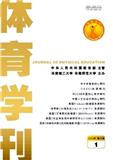
体育学刊
C刊,北核,科核,AMI核心,武A
CN中文-双月刊影响因子4.19
-
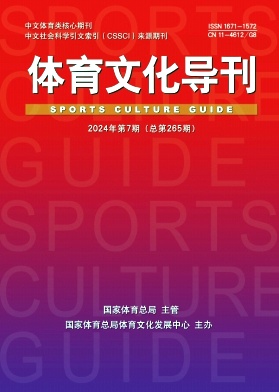
体育文化导刊(曾用刊名:体育文史)
北核,C扩,武A-,AMI扩
CN中文-月刊影响因子3.322
-
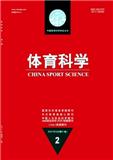
体育科学(不收版面费审稿费)
AMI权威,C刊,北核,科核,武A+,国社科-合格
CN中文-月刊影响因子7.228
-
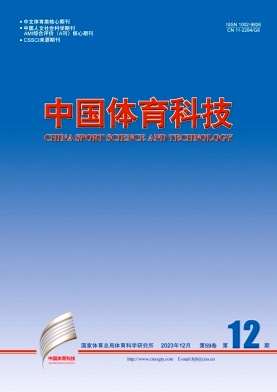
中国体育科技
C刊,北核,科核,AMI核心,武A
CN中文-月刊影响因子4.786
-

体育与科学(不收版面费审稿费)
C刊,北核,科核,AMI核心,武A,国社科-合格
CN中文-双月刊影响因子3.612
-
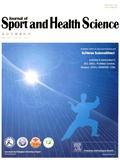
运动与健康科学(英文版)(Journal of Sport and Health Science)(原:环球体育市场)
AMI权威,CSCD,科核
CN外文-双月刊影响因子1.074
-

体育科研(不收版面费审稿费)
AMI扩,武B+,CACJ-扩展
CN中文-双月刊影响因子1.503
-

山东体育科技
AMI扩,武B+
CN中文-双月刊影响因子0.531
常见问题
-
体育运动科学杂志社官网、联系方式是什么?
体育运动科学杂志社官网:https://link.springer.com/journal/42978
投稿网址:https://www.editorialmanager.com/ssej联系电话:010-62989557(公众号信息)
投稿邮箱:ssej_bsu@foxmail.com(公众号信息) -
体育运动科学杂志是核心期刊么?
体育运动科学是核心期刊,级别是:CSCD,AMI入库, 是:体育分类下的维普目次收录的期刊。
-
请问你们是体育运动科学杂志社吗?
我们不是《体育运动科学》杂志社。本站主要从事期刊信息展示与期刊推荐,不是任何杂志官网,直投稿件请联系杂志社。本站仅提供免费的学术指导、论文辅导、期刊投稿信息整理收集服务。
-
你们指导服务后可以保证文章被发表吗?
期刊发表的成功与否,主要取决于文章内容的质量。编辑老师会根据研究领域、创新性等多因素进行考量。我们会帮助您理解期刊的发表要求,助力提升发表几率,从而增加发表的机会。
-
晋级论文能否在报纸上发表?
在学术界,论文的发表往往被视为研究者职业发展的重要一环。晋级论文,即为了获得更高职称或学术地位而撰写的学术论文,通常需在专业期刊上发表。然而,许多人可能会问
